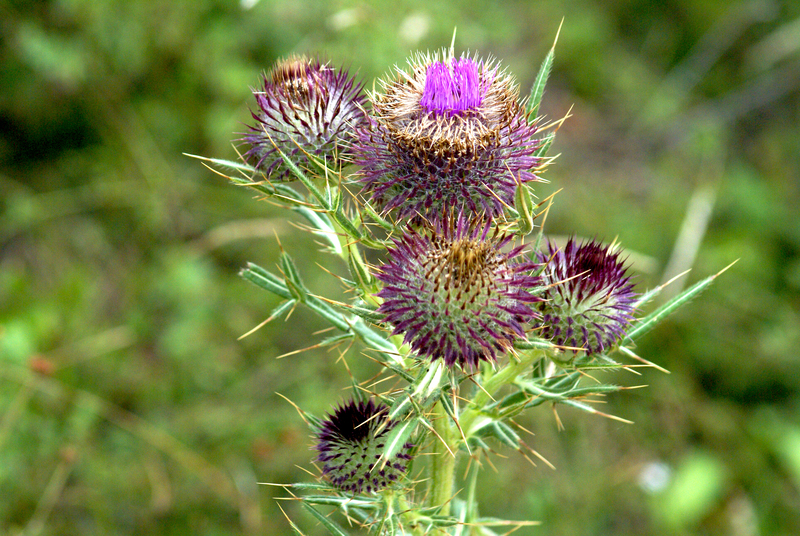Gardening Made Easy with These 9 UK Ground Covers
Posted on 15/05/2025

Gardening Made Easy with These 9 UK Ground Covers
Whether you're an experienced gardener or just starting out, incorporating ground covers in your garden is an excellent way to enhance its beauty, suppress weeds, and even provide a habitat for beneficial insects. In the UK, there is a plethora of versatile ground covers that thrive in a variety of environments. In this article, we explore nine remarkable ground covers that will make your gardening journey easier and more rewarding.
1. Creeping Thyme (Thymus Serpyllum)
Creeping Thyme is an ideal choice for those looking to add a fragrant, lush green carpet to their garden. This perennial ground cover is a favorite for sunny areas and its purple flowers attract bees, making it beneficial for pollinators.
- Light: Full sun
- Soil: Well-drained, sandy soil
- Benefits: Low maintenance, drought tolerant
2. Periwinkle (Vinca Minor)
Periwinkle is perfect for shady areas and is known for its glossy green foliage and delicate lavender-blue flowers. It can help prevent soil erosion and is relatively low maintenance.
- Light: Partial to full shade
- Soil: Moist, well-drained soil
- Benefits: Evergreen, controls erosion
3. Bugleweed (Ajuga Reptans)
With its striking blue-purple flowers and vibrant foliage, Bugleweed is an excellent choice for adding a splash of color to your garden. It spreads quickly, making it effective for large spaces.
- Light: Full sun to part shade
- Soil: Moist, well-drained soil
- Benefits: Fast-spreading, colorful blooms
4. Barrenwort (Epimedium)
Barrenwort offers an attractive combination of heart-shaped leaves and charming flowers that can brighten up any garden bed. Its thick foliage is perfect for suppressing weeds.
- Light: Partial to full shade
- Soil: Humus-rich, well-drained soil
- Benefits: Weed suppressant, attractive foliage
5. Woolly Thyme (Thymus Pseudolanuginosus)
Woolly Thyme is a delightful ground cover known for its soft, fuzzy foliage. It's perfect between stepping stones due to its low growth habit and resilience.
- Light: Full sun
- Soil: Well-drained soil
- Benefits: Soft texture, low maintenance
6. Sweet Woodruff (Galium Odoratum)
Sweet Woodruff provides a powerful fragrance and quaint white flowers. It's a great choice for woodland gardens and is known for its ability to thrive in shady spots.
- Light: Partial to full shade
- Soil: Moist, well-drained soil
- Benefits: Fragrant, shade tolerant
7. Herniaria (Herniaria Glabra)
Also known as Rupturewort, Herniaria is a robust ground cover suitable for covering large areas with low, dense foliage. It's often chosen for rock gardens due to its hardiness.
- Light: Full sun to part shade
- Soil: Dry, well-drained soil
- Benefits: Hardy, dense growth pattern
8. Mind-Your-Own-Business (Soleirolia Soleirolii)
This charming ground cover is a popular choice for providing a lush green mat across the garden. Its small leaves create a soft, sprawling effect that looks beautiful spilling over paths and pots.
- Light: Partial to full shade
- Soil: Moist, well-drained soil
- Benefits: Dense mat, charming aesthetic
9. Lamb's Ears (Stachys Byzantina)
Lamb's Ears is beloved for its velvety, silver foliage, which contrasts beautifully with other garden plants. It is particularly effective in providing texture and color variation.
- Light: Full sun
- Soil: Well-drained, poor soil
- Benefits: Unique texture, drought tolerant
Benefits of Using Ground Covers in Your Garden
Utilizing ground covers in your UK garden offers numerous benefits:
- Weed Suppression: By covering the soil, ground covers reduce the space available for weeds to grow.
- Moisture Retention: They help retain soil moisture by reducing water evaporation.
- Soil Protection: Ground covers prevent soil erosion and shield it from harsh weather conditions.
- Biodiversity: Provides habitats for beneficial insects and enhances the ecological health of your garden.
Tips for Planting and Caring for Ground Covers
- Choose the Right Plant: Consider your garden's environmental conditions such as light, soil, and moisture levels.
- Preparation: Remove weeds and debris, and improve soil conditions before planting.
- Spacing: Follow recommended spacing guidelines for each plant to ensure optimal growth.
- Watering: Establish a watering schedule based on the plant's specific needs.
- Maintenance: Regularly check for pests and diseases, and prune as necessary to encourage dense growth.
By integrating these exceptional ground covers into your UK garden, you can create a vibrant, low-maintenance landscape that not only looks stunning but also contributes to a healthier ecosystem. Happy gardening!




